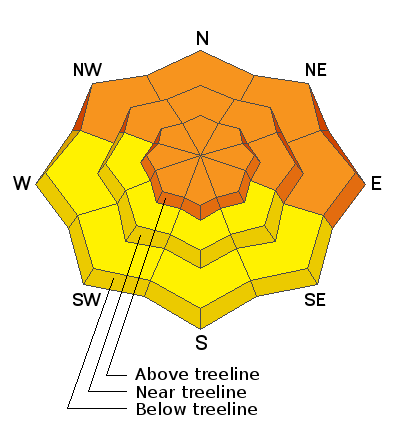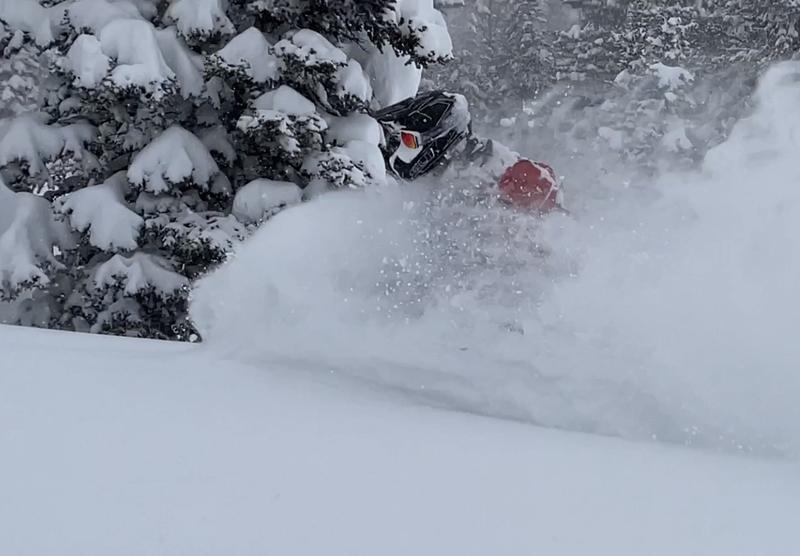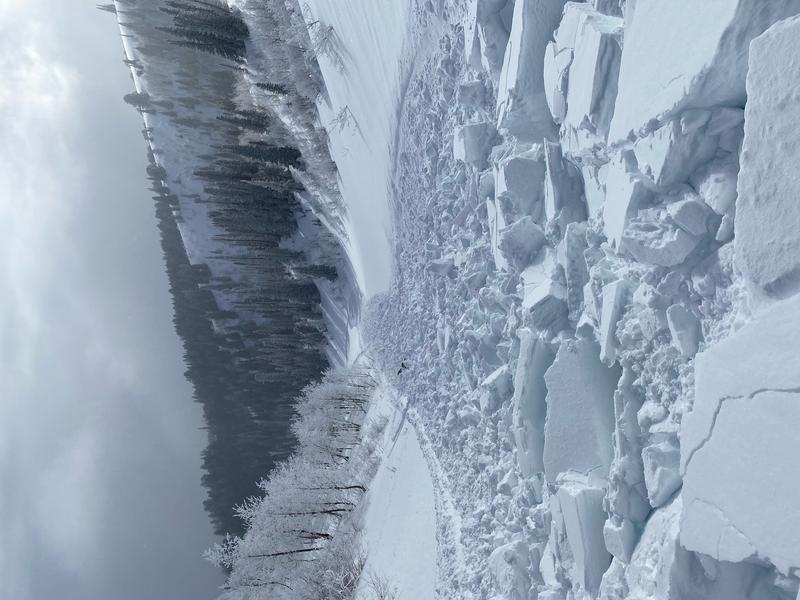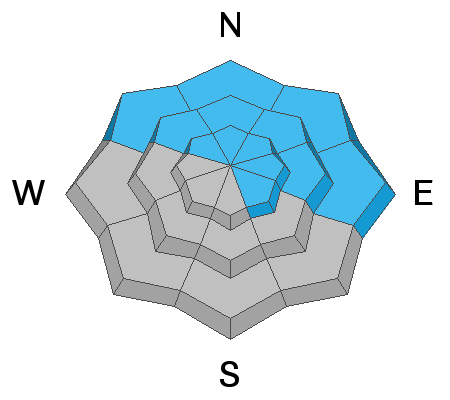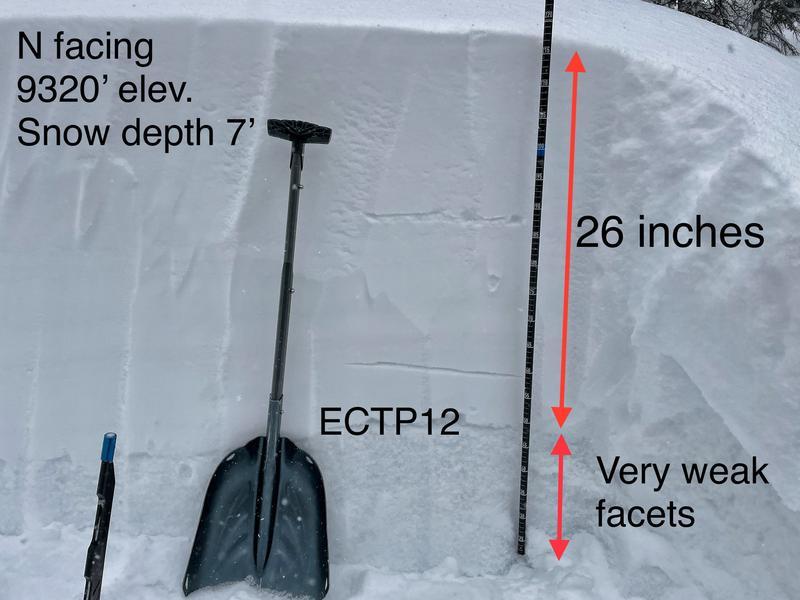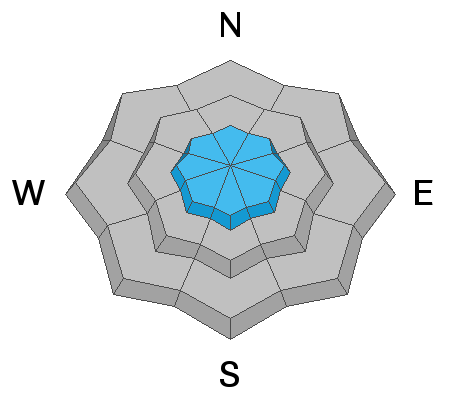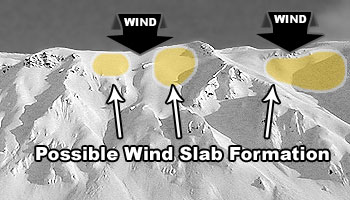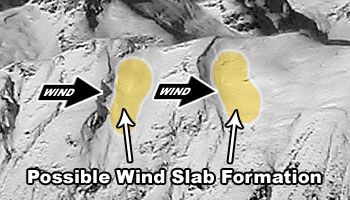There is a persistent weak layer of faceted snow buried 2 feet deep that will fracture and produce avalanches today. Think of it like a layer of dominoes under snow from the last few storms. When your skis or track tip the first domino, it sets off a chain reaction in which all the dominoes (aka the weak layer) collapse, and that allows the slab of snow on top to crash downhill. You only have to be near a steep slope (at the top, bottom, or to the side) to tip one of the dominoes and trigger a slide.
What makes this situation tricky?
- We don't normally deal with long lasting avalanche problems like this in this part of the winter. These avalanches will act more like early and mid season slides that break on faceted or sugar snow near the ground except in this case avalanches will break in the middle of the snowpack. These slides will also break in areas below treeline where we don't often expect to see as many avalanches.
- You can trigger one of these slides by simply being near a steep slope but not necessarily on it.
- This weak layer is on many slopes but not all. OR, it may be on one part of slope but not the other. This means you may see people ride a slope and not trigger a slide. The second or third person on a slope may be the one to trigger it, OR you may not trigger a slide until you go onto a different slope.
What to do? There are two options. Ride southerly facing slopes that don't have this weak layer, but the problem is they have a much thinner snowpack. Other slopes with a deeper snowpack and better powder likely have this weak layer and will be unstable. In those areas, ride slopes less than 30 degrees in steepness with nothing steeper above you (avalanches don't happen on slopes less than 30 degrees but it takes training and practice to identify those with your eyes; otherwise, you have to measure them with an slope measuring app).
Notice the layer of granular, weak, sugary faceted snow in the photo below.

